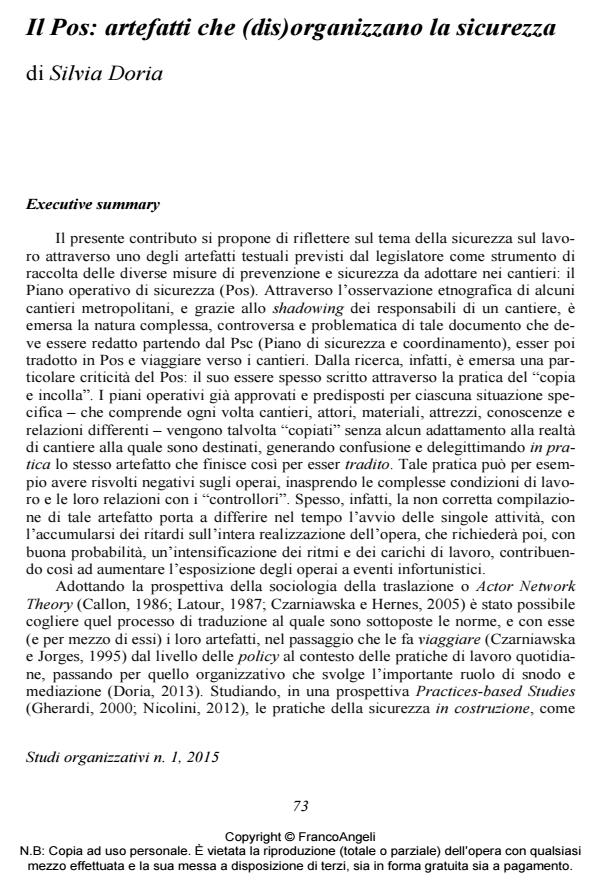Il Pos: artefatti che (dis)organizzano la sicurezza
Journal title STUDI ORGANIZZATIVI
Author/s Silvia Doria
Publishing Year 2015 Issue 2015/1
Language Italian Pages 24 P. 76-93 File size 229 KB
DOI 10.3280/SO2015-001004
DOI is like a bar code for intellectual property: to have more infomation
click here
Below, you can see the article first page
If you want to buy this article in PDF format, you can do it, following the instructions to buy download credits

FrancoAngeli is member of Publishers International Linking Association, Inc (PILA), a not-for-profit association which run the CrossRef service enabling links to and from online scholarly content.
The paper proposes a reflection on the issue of safety at work through the operational plan of safety (Pos), a textual artefact provided by the legislature as a tool aimed to collect the various measures of prevention and safety to be taken in a specific context of work. Through ethnographic observation of some urban construction sites and the shadowing of site managers, the paper explore the complex, controversial and problematic nature of the POS. This document must respect the PSC (Safety Plan and Coordination) and it has to be translated into the POS and be able to travel to the sites. The research shows a particular critical issue: it’s often written through the practice of "copy and paste". The observation of several critical issues related to POS provides interesting insights about the complex process of translating safety into practice, where workplace safety itself can no longer be considered only as a situation where "the official documents are ok".
Keywords: Safety, everyday working practices, textual artifact, Operational plan of safety, prevention, ethnography
Silvia Doria, Il Pos: artefatti che (dis)organizzano la sicurezza in "STUDI ORGANIZZATIVI " 1/2015, pp 76-93, DOI: 10.3280/SO2015-001004